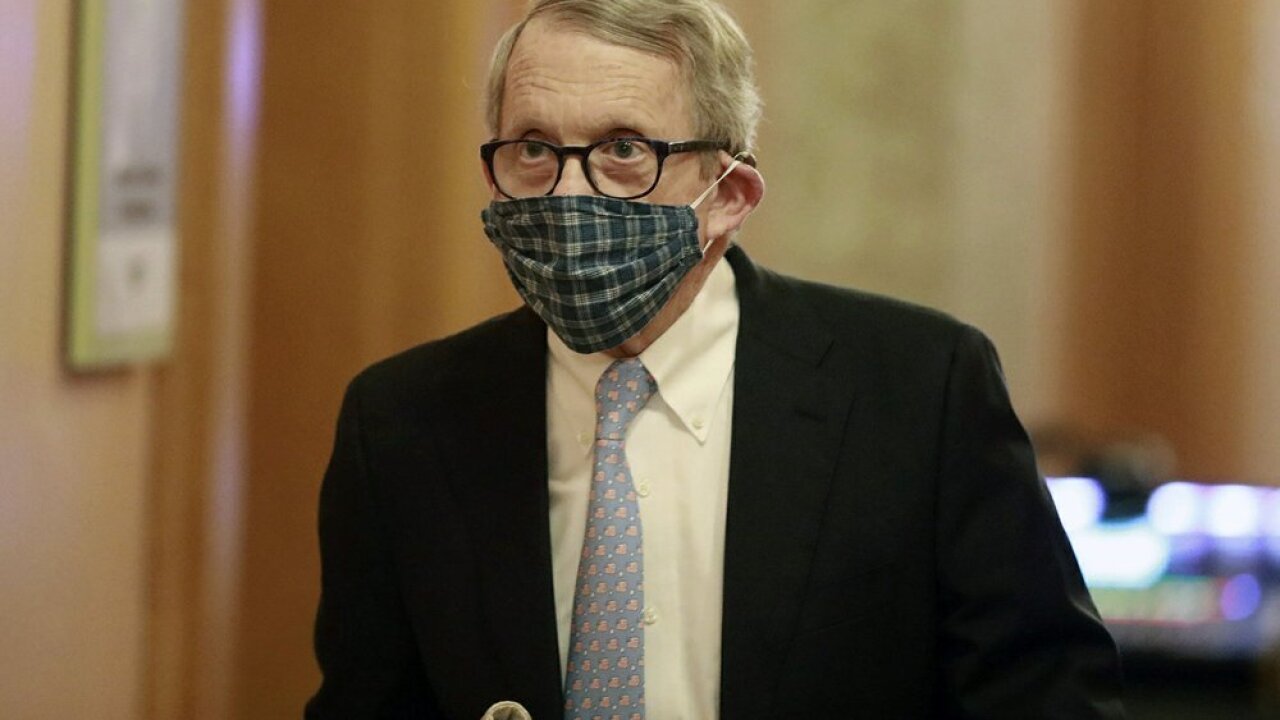COLUMBUS, Ohio — Gov. Mike DeWine again spent his daily coronavirus briefing addressing anti-police brutality protests and their aftermath, repeatedly deeming the idea of defunding or disbanding Ohio police departments “absurd.”
“I can’t imagine what people are thinking about defunding the police,” he said, referring to freshly galvanized pushes for municipal governments to reallocate at least a portion of the tens of millions they spend on law enforcement each year.
Advocates for such plans have argued that police departments receive disproportionate funding compared to most cities’ other social services, and many of the scenes to which they respond would be better served by social workers or addiction counselors. Activist groups’ proposals range from substantial budget cuts to the total disassembly of existing police departments, which would then be replaced with new types of public welfare agencies. Minneapolis, where George Floyd was killed by a police force hampered by long-running accusations of racism, has pledged to try the latter.
But DeWine on Tuesday argued that procedural remedies would be more realistic and responsible solutions for Ohio.
“We are going to continue to work on this,” he said. “These are my first round of announcements. These are the additions, frankly, that I can make quickly without legislation. Many necessary changes for meaningful law enforcement reform are going to require legislative action.”
Specifically, he said, he plans to push more Ohio police agencies to meet the state’s minimum standards for use-of-force policies and recruitment.
He inherited these standards from the John Kasich administration, which created the Ohio Collaborative Community-Police Advisory Board in 2015. They include the requirement that departments officially adopt a use-of-force policy in which “employees may only use the force which is reasonably necessary to effect lawful objectives” and that they commit to hiring a “diverse workforce that reflects the citizens they serve.”
Only about half of Ohio’s law enforcement agencies are certified. The remainder — at least 400 agencies — are not. Local police departments that remain uncertified in Greater Cincinnati include Middletown, Fairfield, Monroe, Trenton, Cheviot, Cleves, Madeira, Mason and Union Township.
READ: The full list of certified police agencies in Ohio
DeWine said the state of Ohio will reach out to uncertified agencies and nudge them toward certification.
“We’ll work with them to ensure their compliance,” DeWine said.
He plans to also ask the Ohio Collaborative Community-Police Advisory Board to create standards governing large-scale protests such as the ones that poured through Cincinnati, Columbus and Cleveland after Floyd’s death. Police should examine their best practices for using tear gas, rubber bullets and other “crowd control” methods that garnered heavy criticism during the Floyd protests, DeWine said.
“When law enforcement witnesses physical violence or property destruction, they must be ready and able to react,” he said. “We are not looking to give a small number of violent protesters a free pass. Far from it. What we do want, though, is for peaceful demonstrators to feel safe when asserting their First Amendment rights and for the public to be protected against violence and the destruction of their property.”
Later, he added he had already begun to create a new state office focusing on law enforcement recruitment to bring more women and minorities into Ohio police forces.
More changes and announcements remained forthcoming, according to the governor, who spoke without Lt. Gov. Jon Husted or Ohio Department of Health director Amy Acton and finished in under an hour.
“I intend to stand here in the near future detailing even more changes,” he said.


